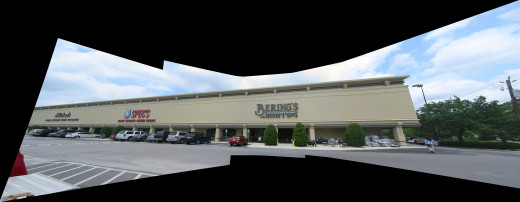- HubPages»
- Technology»
- Computers & Software»
- Computer Software
Hot word about perspective in ICE
What is there may not be what you see
Right you are. I am trying to mess with your mind – but just a little.
Perspective is all about how you see something. Close to you, things are large. Far away, they get small. Not really, but it seems to be that way to your eyes.
When your eyes see something, your mind translates the view. When things look to be large when close to you, your mind tells you, “Yes, they are large” or “No, they are really small” or “Maybe yes, maybe no, for I can't remember and I can't calculate which of the two it is.”
Cameras don't have memory or translating-capable minds like yours. Close to the lens, stuff looks big and, far away, it can look mighty tiny. For example, look at this picture. It shows a long building. The camera is close to the nearby part of the building. The farther away the building gets from the camera lens, the smaller it looks. That's no big surprise to you. You knew that it would be that way.

Brain power over program power
Computer programs don't know such things unless you and your brain clue them in on the perspective involved. This is especially true about computer programs designed to stitch individual photo frames together to form composites of them; that is, panoramic images.
As it often happens, the image frames showing parts of a scene closest to the camera can become very distorted parts of a stitched-together photo image. True enough, those closer image parts of the whole do appear larger than the parts farther away, as you would expect. What you probably would not expect to see is the near image part becoming curved. That is not really the sort of perspective with which you see the same scene using your own eye vision in place of your camera's vision. Check out the stitched photo here. Also, take a look at the single photo frame. It has the same tendency to curvature where no curvature exists in the actual building structure.


Cooling a hot problem with ICE
Enter ICE – Microsoft's Image Composite Editor software.
If you use this computer program to produce stitched-together photos – panoramas they are often called – there is a perspective correction feature in the program you can use to “fix” those unwanted curvatures. There are some caveats to be followed, however.
It is easy to over-apply perspective corrections. As in digging holes in the ground, cooking cakes in the kitchen, or driving your car down the highway, you can overdo things. Thus, there is a need for you to utilize the artist in you – to let your eyes and that marvelous brain tell you when enough is enough correction. It's like that common expression we often hear, “If it doesn't feel right, then don't do it.”
Here is a stitched photo of the seemingly curved storefront, above, with the curvature edited out in ICE by use of its perspective option.


Maybe there is more software like ICE - somewhere...
There are other photo editing programs that provide options for you to change the photo viewing perspectives. I intend to become familiar with them. One such program is Gimp." Perhaps "Paint.net" is another. For now, I am happy to know that I can improve the apparent viewing perspective of my camera whenever it is warranted.








